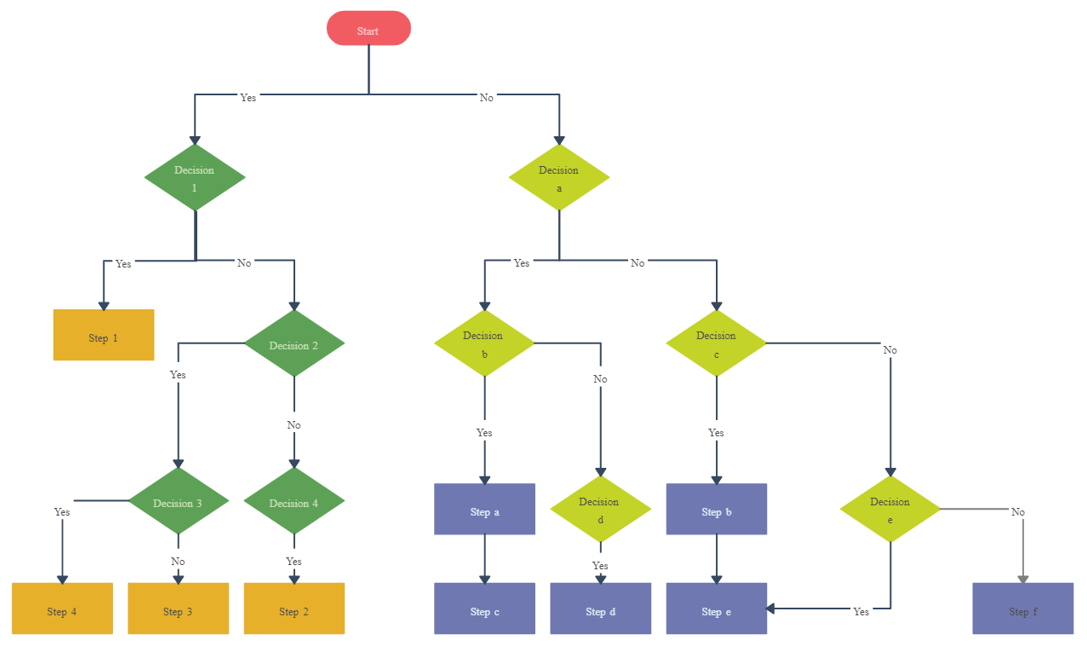Introduction
In our rapidly changing and interconnected world, the problems we encounter often go beyond the scope of individual fields or organizations. To effectively navigate these complexities, we require a comprehensive perspective that acknowledges the interconnections and interdependencies among different elements. System thinking offers us this lens, empowering us to understand and tackle complex issues with efficacy (Arnold and Wade, 2015). At the heart of this approach lies the implementation of strong governance models, which form the foundation for efficient decision-making processes. This article delves into the ways in which governance models, guided by the principles of system thinking, enhance the effectiveness of decision-making.
Decision Flowchart Template:

An indispensable resource for streamlining intricate decision-making processes is a Decision Flowchart Template. This tool serves as a visual aid that facilitates consensus-building among individuals or teams. By breaking down the entire task into manageable and well-organized steps, it offers a user-friendly flowchart design. Each step is clearly defined, and decision points are strategically placed to enable users to make informed choices efficiently. This versatile tool finds applications across diverse operations such as product development, project evaluation, risk management, and marketing.
The Role of Governance Models:
Governance models serve as the framework for decision-making processes within organizations, communities, and even nations. By incorporating system thinking principles into governance models, decision-makers can tap into the benefits mentioned above. Here's how governance models contribute to effective decision-making:
1. Establishing Clear Objectives and Values: A robust governance model rooted in system thinking ensures that decision-making processes are aligned with the objectives and values of the system. By defining clear goals and desired outcomes, decision-makers can make informed choices that prioritize the long-term sustainability and well-being of the entire system.
2. Engaging Stakeholders: System thinking emphasizes the importance of involving all relevant stakeholders in the decision-making process. A well-designed governance model ensures that diverse perspectives are considered, enabling decision-makers to make more comprehensive and inclusive choices. This collaborative approach fosters ownership, trust, and accountability among stakeholders, leading to effective implementation of decisions.
3. Incorporating Feedback Mechanisms: Governance models influenced by system thinking principles incorporate mechanisms for feedback and learning. By continuously monitoring and evaluating the outcomes of decisions, decision-makers can adapt and adjust their strategies accordingly. This iterative process allows for ongoing improvement, fostering adaptive governance that responds to changing circumstances and emerging insights.
4. Building Resilience: A governance model informed by system thinking promotes resilience within a system. By considering potential risks, uncertainties, and contingencies, decision-makers can develop strategies that.
Reference list:
1. Arnold, R.D. and Wade, J.P. (2015) ‘A definition of systems thinking: A systems approach’, Procedia Computer Science, 44, pp. 669–678. doi:10.1016/j.procs.2015.03.050.
2. Johnstone, D., Huff, S. et al. (2006, January). IT Projects: Conflict, Governance, and Systems Thinking. System Sciences, 2006. HICSS ‘06. Kauai, Hawaii
3. Learning library - project management institute. Available at: https://www.pmi.org/learning/library (Accessed: 07 June 2023).

